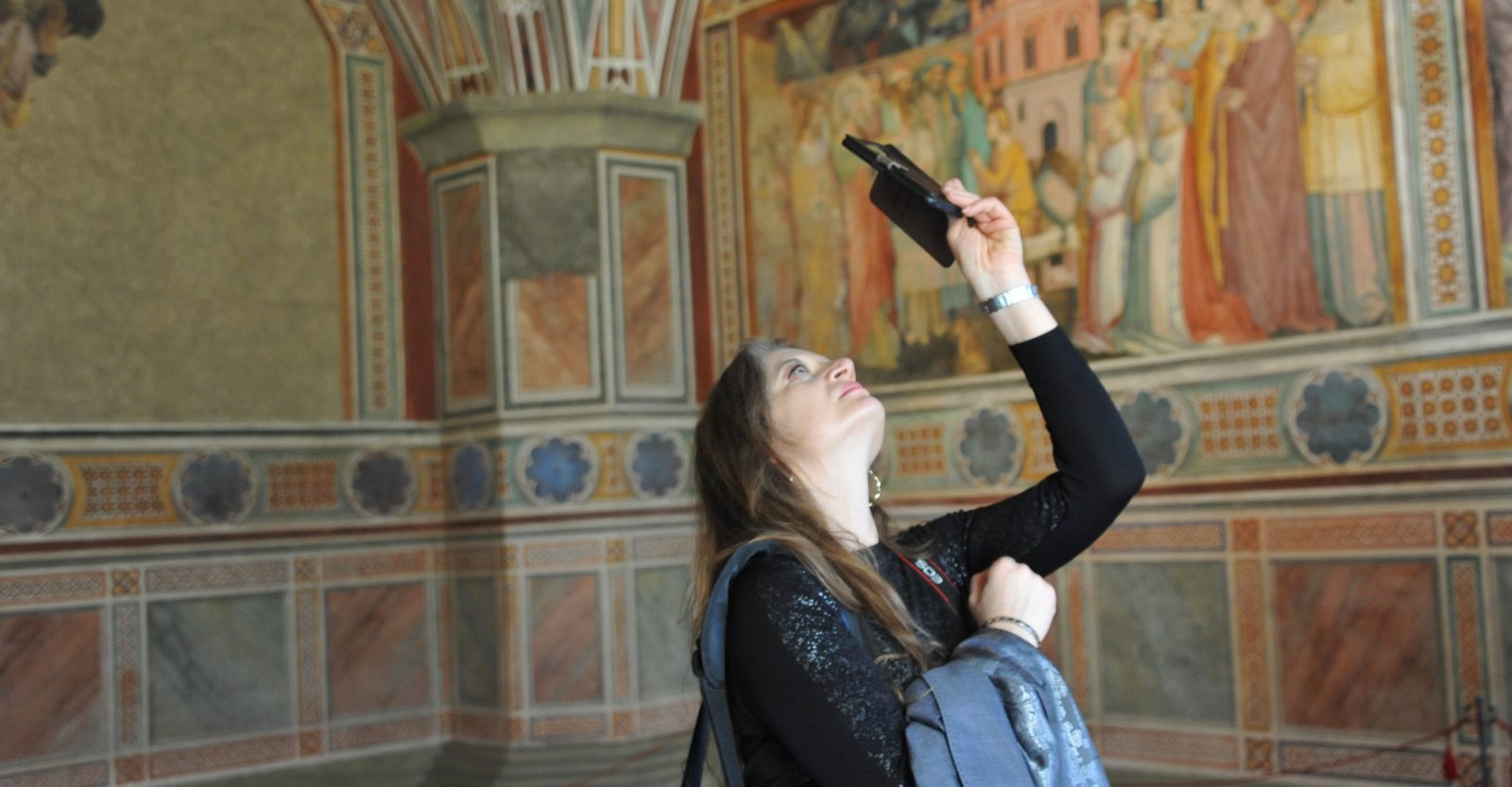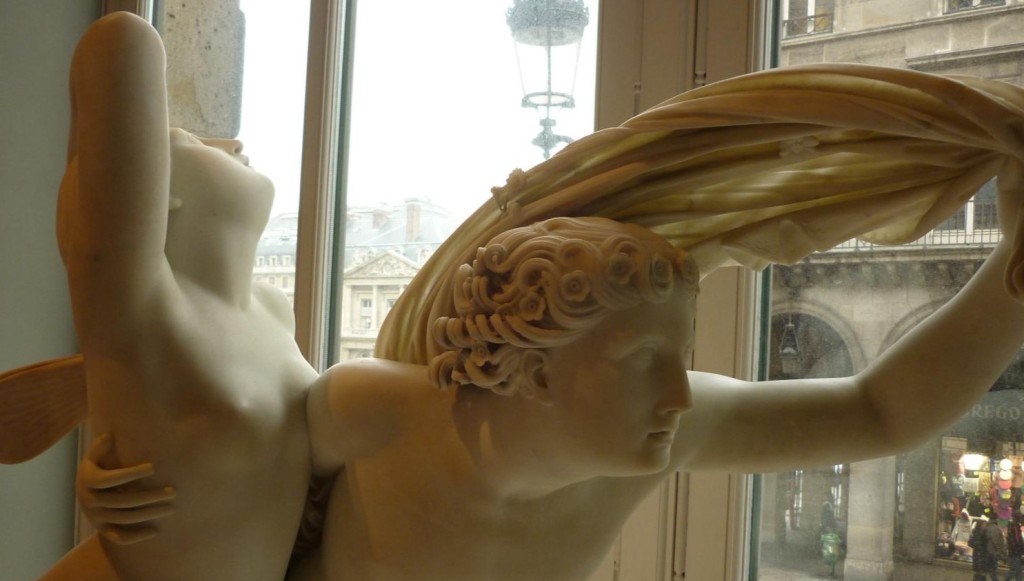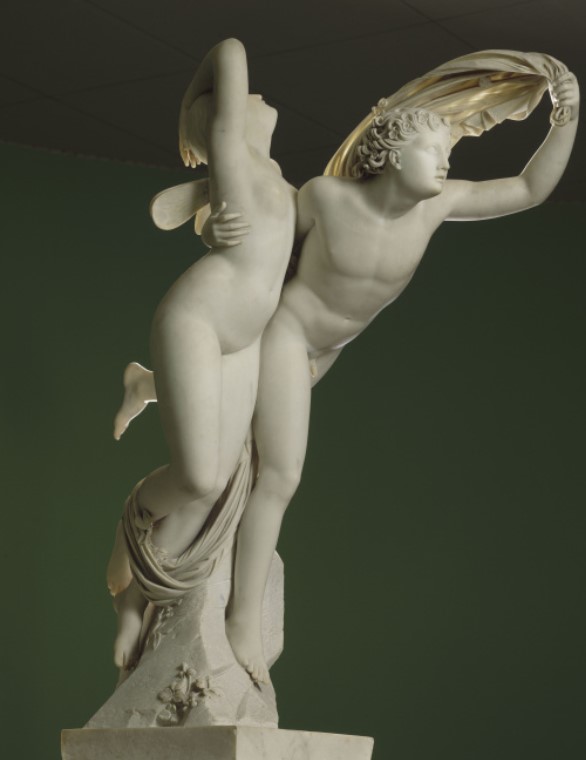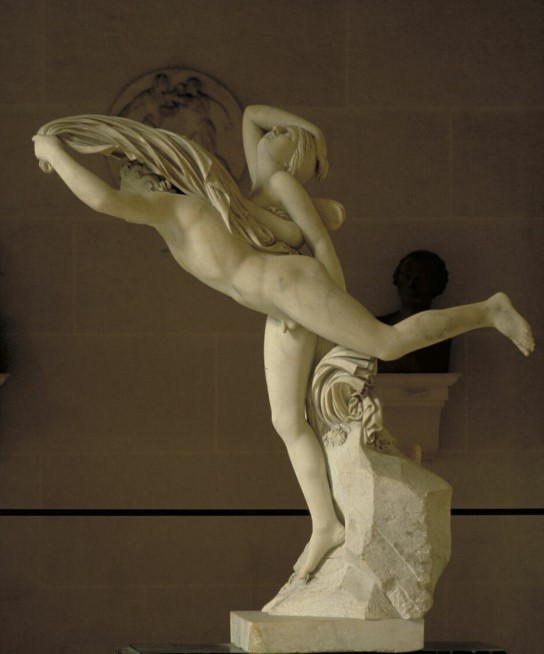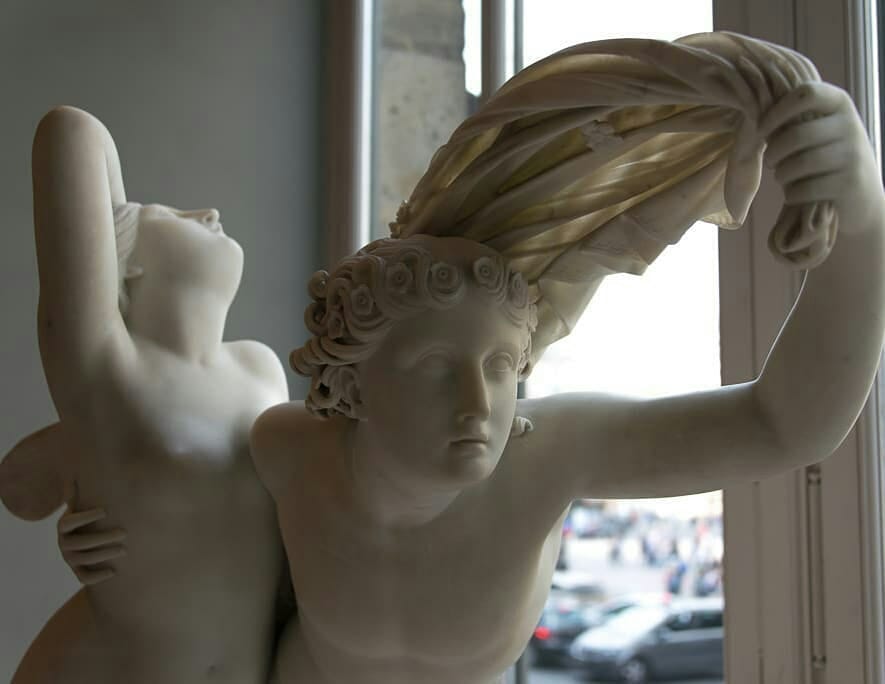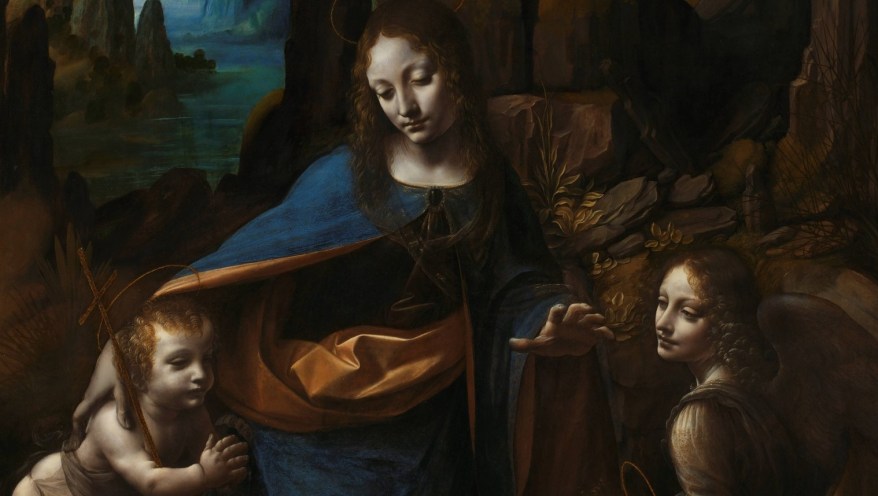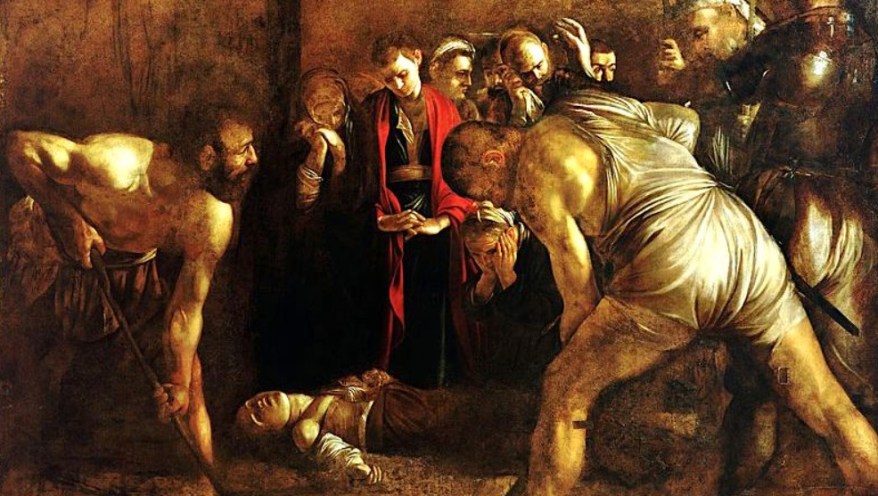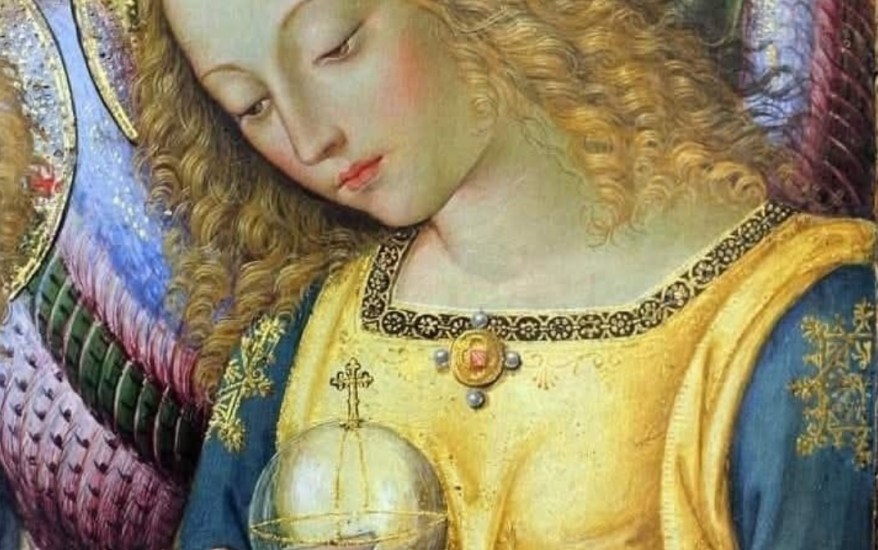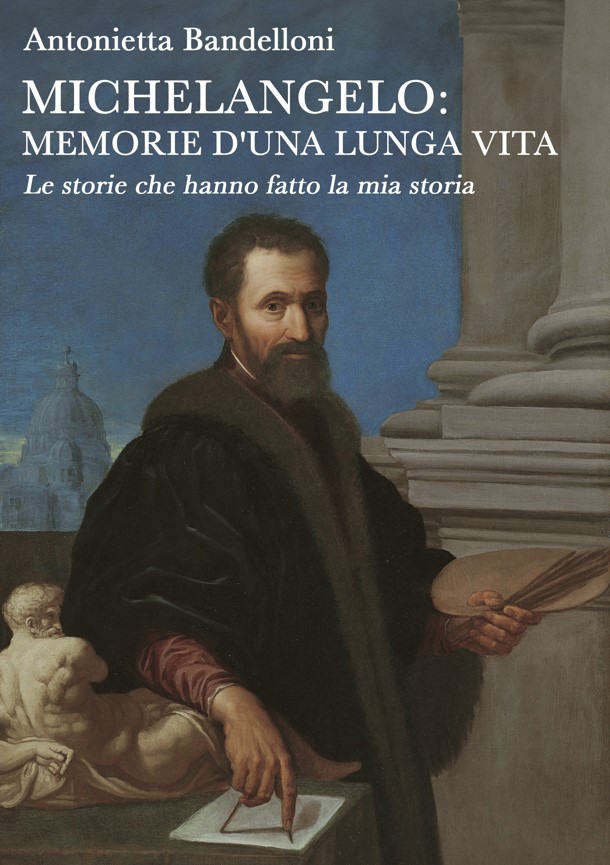La Scultura del giorno: Zefiro che rapisce Psiche di Rutxhiel
La scultura del giorno che vi propongo oggi è Zefiro che rapisce Psiche, scolpita dall’artista belga Henri Joseph Rutxhiel nel 1814.
Il modello in gesso dell’opera fu realizzato da Rutxhiel quando si trovava a Roma, attorno al 1810. A destare particolare interesse in quest’opera è lo slancio di Zefiro in avanti che pare essere leggerissimo ed etereo.
E’ tutta la parte sinistra della personificazione del vento ad essere allungata: il braccio che tiene il panneggio gonfiato dall’aria e la rispettiva gamba protesa all’indietro con il ginocchio leggermente piegato rende l’idea di un movimento continuo e di una figura che si libra nell’aria.
Impressionante quanto sia piccolo il punto di scarico del peso a terra di Zefiro e Psiche la quale, con il capo rovesciato all’indietro, sembra essere già svenuta come il mito greco racconta.
Rutxhiel gioca la sua creazione tutta sull’equilibrio perfetto senza lasciare nulla al caso.
La scultura fu acquistata dal Ministère de la Maison du Roi il 13 dicembre del 1815 e poi collocata nel castello di Saint Cloud l’anno successivo. Nel maggio di 1825 fu portata al castello di Meudon per entrare successivamente, il 1 marzo del 1851, in via definitiva al Museo del Louvre.
Per il momento il sempre vostro michelangelo Buonarroti vi saluta dandovi appuntamento ai prossimi post
Sculpture of the day: Zephyr abducting Rutxhiel’s Psyche
The sculpture of the day that I propose to you today is Zephyr abducting Psyche, sculpted by the Belgian artist Henri Joseph Rutxhiel in 1814.
The plaster model of the work was created by Rutxhiel when he was in Rome, around 1810. What is of particular interest in this work is Zefiro’s forward momentum which appears to be very light and ethereal.
It is the entire left side of the personification of the wind that is elongated: the arm that holds the drapery inflated by the air and the respective leg stretched backwards with the knee slightly bent gives the idea of a continuous movement and of a figure that it hovers in the air.
It is impressive how small the point of discharge of the weight of Zephyr and Psyche to the ground is, who, with her head thrown back, seems to have already fainted as the Greek myth tells.
Rutxhiel plays his creation entirely on perfect balance without leaving anything to chance.
The sculpture was purchased by the Ministère de la Maison du Roi on 13 December 1815 and then placed in the castle of Saint Cloud the following year. In May 1825 it was taken to the castle of Meudon and subsequently, on 1 March 1851, definitively entered the Louvre Museum.
For the moment your always Michelangelo Buonarroti greets you and will meet you at the next post

Sostienici – Support Us
Se questo blog ti piace e ti appassiona, puoi aiutarci a farlo crescere sempre più sostenendoci in modo concreto condividendo i post, seguendo le pagine social e con un contributo che ci aiuta ad andare avanti con il nostro lavoro di divulgazione. . ENGLISH: If you like and are passionate about this blog, you can help us make it grow more and more by supporting us in a concrete way by sharing posts, following social pages and with a contribution that helps us to move forward with our dissemination work.
10,00 €
-

La Madonna con Bambino del Sassoferrato: capolavoro del Natale tra classicismo e spiritualità
🇮🇹Il dipinto del Natale che vi propongo oggi è la Madonna con Bambino che le porge un frutto di Giovanni Battista Salvi, più noto come il Sassoferrato. La Vergine appare trasognata, assorta in un pensiero intimo, mentre porge alla luce il lato destro del volto… 🇬🇧The Christmas painting I’m featuring today is the Madonna and…
-
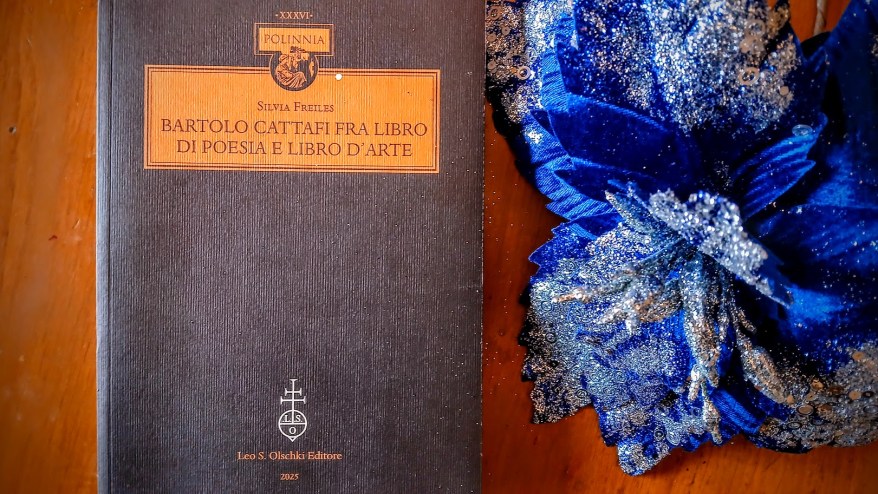
Bartolo Cattafi: fra libro di poesia e libro d’arte. La recensione
Nuova lettura. Bartolo Cattafi fra libro di poesia e libro d’arte di Silvia Frailes, pubblicato da Olschki Editore, esplora il legame unico tra poesia e arti visive. Cattafi non è solo poeta: i suoi libri diventano vere opere d’arte, dove parola, immagine e forma dialogano…
-
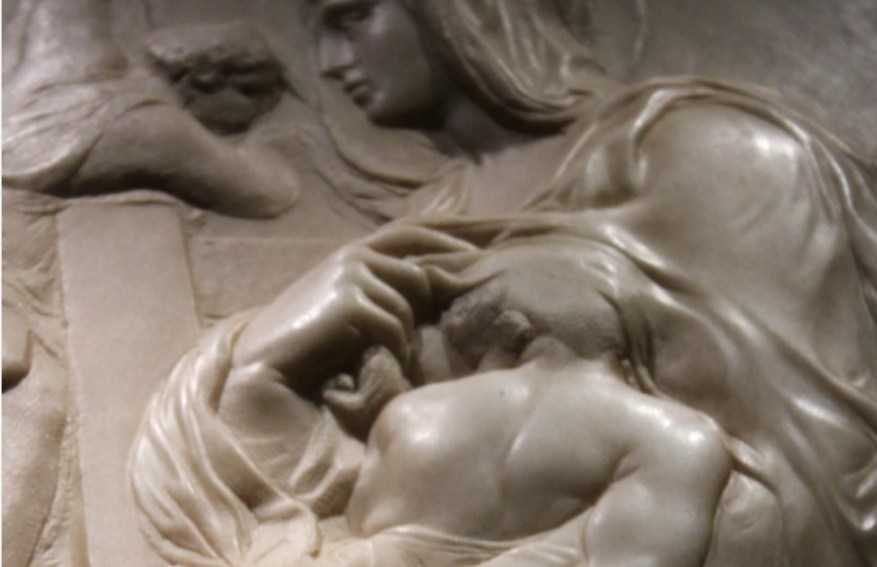
La Madonna della Scala: il mio primo capolavoro
🇮🇹La Madonna della Scala, custodita oggi di consueto a Casa Buonarroti, è la mia prima opera scultorea arrivata fino ai vostro giorni. Avevo sedici anni quando terminai di metter mano a quello stiacciato che imita ma oltrepassa lo stile di Donatello… 🇬🇧The Madonna della Scala, now housed as usual at Casa Buonarroti, is my first…

